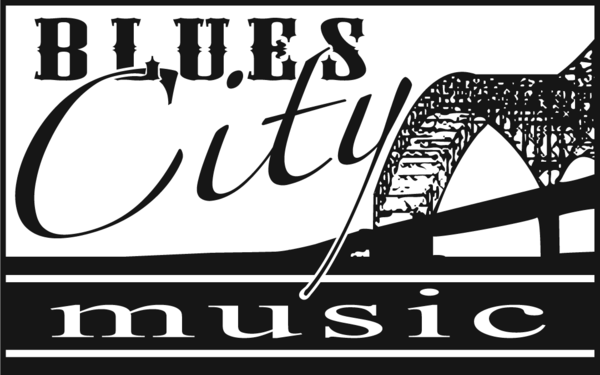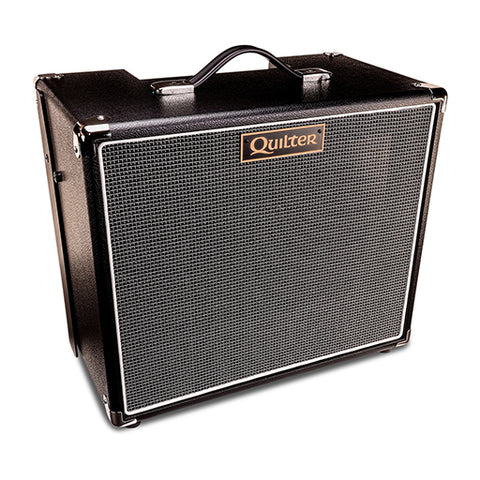
Blues City Music LLC has terminated our relationship with Quilter due to irreconcilable differences.
Quilter Performance Amplification Home Page
Blues City Music, LLC, is a proud authorized dealer for Quilter Performance Amplification.
What really intrigues us about Quilter is the fact that their "Block" amps fit into a very serious niche within the musical instrument world as the perfect rig for the bedroom player, club gigging member, or fly in gig player. You can carry all your need in your own guitar gig bag. No need to haul around big rigs when you just don't have the logistics for it.
Ok, can we get real here?
Nothing, and I mean nothing, sounds better and more explosive than a loud screaming 100 watt head and a stack of 4x12" cabinets, but unless you are a major label arena band, chances are you won't have the luxury of running gear like this. Even if you could, the PA system would have to be enormous as in line array systems in order to keep up with this kind of guitar rig.
In comes Quilter Performance Amplification. Fabulous quality control, direct outs to the PA and/or speaker cabinet (s), tone controls, gain controls, and wattage controls. You have all you need in one very small compact unit. This is exactly why I took Quilter on as a new dealer. It fits the bill for every type of player, and is a "real world" rig.
TUBE AMPS.
Let’s face it. The electric guitar and its companion tube amp grew up together, and the natural sound of tubes is deeply embedded in our consciousness as the “sound of the electric guitar”. But tube technology reached its limits sometime around 1960 and it’s been slowly downhill ever since. Modern tubes aren’t as good as they used to be, and tube amps are inherently finicky, costly, and heavy. A good hand-wired boutique amp, built like they used to be, costs thousands of dollars, and “semi affordable” tube amps involve drastic reductions in power, tone, versatility, and
reliability. And amps with enough power to keep up with drums are just too darn heavy!
SOLID STATE.
“To the rescue” came solid state replacements, starting in the late 1960s. Conventional solid state runs somewhat cooler and eliminates some of the large transformers that make tube amps so heavy. But musicians noticed a much colder, harsher tone quality and continued to favor tube amps. The cost of solid state
plunged due to relentless competition in mass-production consumer products, so you can get more power at lower cost, but despite many attempts over the years, the tone and “feel” just hasn’t been there. And in an endless race to be cheaper than the competition, other important attributes such as speaker quality and cabinet construction have been sadly debased.
DIGITAL MODELING.
“To the rescue” comes the incredible power of digital signal processing. In theory, the exact response curve of the most respected vintage amps can be captured and recalled at will, providing “100 different amps” in one box. In practice, there are still many subtle properties that aren’t well modeled, there’s a perceptible “latency” while the processing occurs, and the resulting artificial re-creation still goes through a conventional cold-hearted solid state amp and relatively cheap speaker. Certain distinctive sounds have emerged from this technology, but discriminating ears agree that even the most expensive digital processors do not capture the warmth and dynamic feel of an actual tube amp.
WHAT WENT WRONG?
The sound of a vintage tube amp is not recalled from a memory bank, but emerges from the interaction of the tubes with the guitar pickups and the loud-speaker, and develops as a result of playing technique. This interaction is highly specific to the actual guitar, speaker, and player, but there are certain overall properties that are common to all good amps. Ironically, these natural properties of tubes are almost completely lacking in standard solid state designs, and are not widely recognized by engineers trained in conventional high fidelity design. But when understood, a good designer can execute these principles using the latest high efficiency, lightweight power circuitry, thus achieving a new breakthrough – a high power, light weight amplifier that has the warmth, dynamics and interactive feel of the best vintage designs, combined with the clarity and versatility of modern analog circuitry.
THE QUILTER MISSION.
Modern audio products are changing from conventional solid state to a much more efficient “switchmode technology” (often called Class D) that delivers more power with lower losses and lighter weight. The new technology is more complex and has stringent regulatory requirements, so it’s been developed first for large-scale
applications such as cellphones, home theaters, car audio systems and large PA amplifiers. Meanwhile, the guitar industry is still stuck in the tube era. Pat Quilter, founder of QSC Audio Products and a veteran designer with over 45 years of experience, is one of the few designers whose career spans tubes, solid state, and the new switchmode technology. His mission is to combine a deep love of
music, a deep understanding of tube behavior, and his expertise in switchmode design, to create new tools that will expand artistic possibilities, relieve performers of excess burdens, and exploit the latest mainstream technology to deliver higher quality and satisfaction at an affordable price.







